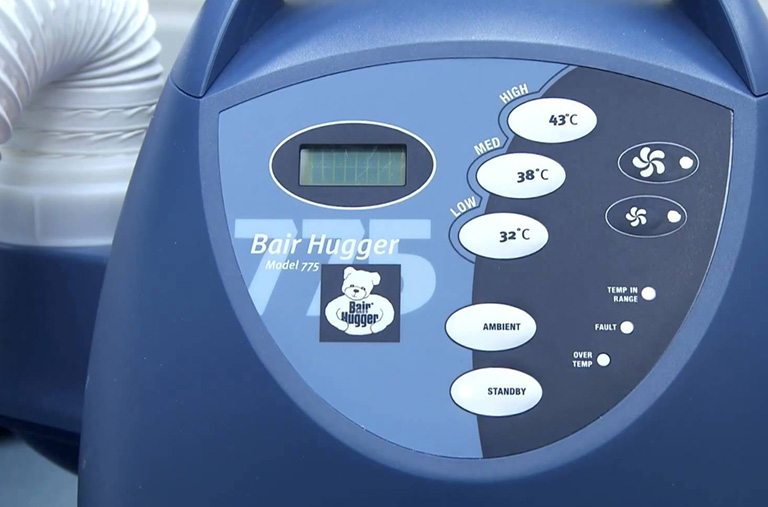Bair Hugger is a forced air surgical warming blanket marketed to prevent regulate patients’ body temperatures during surgery. The system includes the surgical blanket, warming units, and accessories.

It is crucial to regulate a patient’s body temperature during surgery to prevent hypothermia, which can lead to a variety of complications. Because of this, forced hot air surgical warming blankets are frequently used.
According to the manufacturer’s website, with the Bair Hugger warming unit, “… filtered air flowing from a warming unit is gently and evenly dispersed throughout the attached warming blanket, which is isolated from the surgical site by an adhesive strip on the blanket and surgical barrier drapes” (3M’s Facts About Forced-Air Warming).
During surgery, warm air is forced through a hose that is connected to a disposable blanket that covers the patient, releasing warmed air around the patient’s body. The warm air circulates under the surgical table and back up to the patient before, during, and after surgery.
Why is Bair Hugger Dangerous?
When the warm air is released through a hose to a disposable blanket draped around the patient, the creator himself, Dr. Augustine, says this forced air can cause unsafe bacteria and germs to enter the otherwise sterile operating area, even exposing the actual surgical site.
Yes, that’s right – the creator of the Bair Hugger therapy, Dr. Augustine, even says that the system is dangerous. He asserted in a New York Times article titled ‘Doctor Says a Device He Invented Poses Risks’ that Bair Hugger should not be used on patients undergoing surgeries such as hip and knee implants and artificial heart valves because of the overwhelming evidence linking his device to dangerous infections (December 24, 2010).
When the surgical site is exposed with this bacteria, dangerous infections spread to the patient’s incision, causing problems such as MRSA and sepsis. These conditions are very difficult to treat, especially when they reside deep in the joints.
One study published in the Bone & Joint Journal reported that the forced air circulating over a patient’s surgical wound had 2,000 times more contaminants than the conductive fabric alternative (Forced-air warming and ultra-clean ventilation do not mix, 2011).

